Essential Guide to Dryer Vent Cleaning Frequency
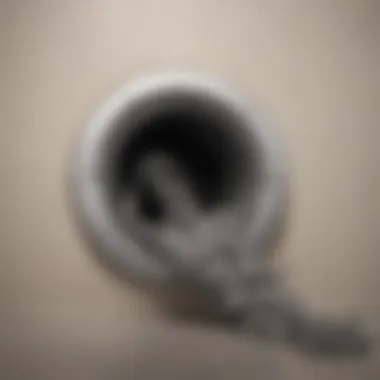
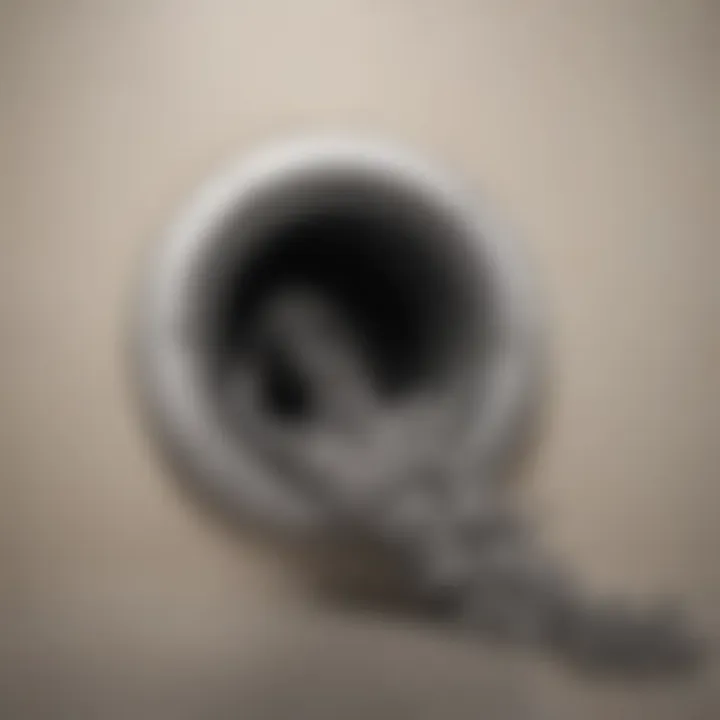
Intro
Cleaning dryer vents is a task often overlooked by homeowners. Yet, it plays a crucial role in maintaining a safe and efficient household. Dryer vents, when clogged, can lead to serious hazards, including fires and inefficiencies in dryer performance. Knowing how often to clean these vents and understanding the risks associated with neglect can help ensure the safety of your home and the longevity of your appliances.
Statistics from the U.S. Fire Administration indicate that failure to clean dryer vents is one of the leading causes of dryer-related fires. Regular maintenance can significantly reduce this risk. However, the question remains: how often should these vents be cleaned? In this article, we will explore this topic in detail, from understanding the signs of blockage to practical tips for maintaining a clear dryer vent.
Importance of Cleaning Dryer Vents
Regularly cleaning dryer vents cannot be understated. When lint builds up in the vent, it restricts airflow, making the dryer work harder. This not only increases energy bills but also shortens the lifespan of the appliance. The lint is also highly flammable, compounding the potential fire hazard.
Risks of Neglected Maintenance
Ignoring dryer vent cleaning can have serious consequences:
- Fire hazards: Accumulation of lint can ignite and lead to a fire.
- Increased energy costs: A clogged vent makes the dryer less efficient.
- Wear and tear on appliances: Strain from overworking can lead to frequent breakdowns.
"It is crucial to understand that the time spent on regular maintenance can prevent significant damage and risks later on."
Identifying Signs of Blockage
There are key indicators that may suggest your dryer vent needs cleaning:
- Longer drying times.
- Burning smell during operation.
- Excess lint around the dryer area.
- Increased humidity in the laundry room.
If you notice any of these signs, it may be time to address the issue.
Recommended Cleaning Frequency
Experts generally recommend cleaning dryer vents at least once a year. However, this can vary based on usage:
- Light usage: Once a year.
- Average usage: Every six months.
- Heavy usage: Every three months.
Specific factors, such as the type of dryer used and frequency of laundry, can influence how often vents need cleaning.
Cleaning Techniques
There are various methods for cleaning dryer vents.
DIY Cleaning Techniques
- Lint Brush: Use a lint brush to remove lint from the lint trap and the vent.
- Vacuum Cleaner: A vacuum with a hose attachment can remove significant lint build-up.
- Flexible Rods: These can reach deeper into the vent.
Professional Services
Some homeowners prefer hiring professionals. Services like those offered by companies such as Dryer Vent Wizard and Stanley Steemer provide thorough cleaning. These experts have tools and education to ensure a complete job, reducing the chances of fire hazards effectively.
Culmination
Maintaining clean dryer vents is essential for safety and efficiency in the home. Understanding the frequency of cleaning and the signs of blockage can make a significant difference. Through regular maintenance, you not only extend the lifespan of your dryer but also prevent potential hazards.
Engaging in proactive care for dryer vents not only ensures the safety of your household but also saves you from costly repairs and inefficiencies. Take charge of your dryer vent maintenance today.
Intro to Dryer Vent Maintenance
Dryer vent maintenance is critical for ensuring the optimal performance of a home’s appliances. Many homeowners overlook this aspect, often underestimating the role of dryer vents. Over time, lint and debris can accumulate inside these ducts, which not only hinders efficiency but can also become a fire hazard. Regular airflow through the vents allows dryers to operate properly. Therefore, it is essential to understand the guidelines for maintaining these vents.
The Role of Dryer Vents
Dryer vents are responsible for channeling moist air and lint away from the dryer and out of the home. Without proper function, moisture and lint can build up. This build-up restricts airflow. Inadequate airflow can lead to longer drying times and overworking the machine. If vents are not functioning as intended, it places a burden on the dryer, leading to early wear and tear. Furthermore, a properly maintained vent system contributes to the longevity of the dryer and saves energy costs related to inefficient drying cycles. Prompt cleaning can be seen as a proactive step in protecting the home and its occupants.
Consequences of Neglected Cleaning
Failing to clean dryer vents regularly can lead to significant risks. One of the most pressing is the heightened danger of fire. Lint is highly combustible. When it accumulates, the risk of ignition increases. Homeowners should know that dryer fires frequently arise from neglected vents. In addition to fire hazards, neglecting this maintenance can result in costly repairs and decreased appliance efficiency. Lint buildup can cause the dryer to overheat, leading to potential damage or even appliance failure. Moreover, higher operating costs can be an outcome; when dryers work harder, it leads to more energy consumption. In summary, ignoring dryer vent cleaning can have dire consequences for both safety and costs.
Understanding Dryer Vents
Understanding dryer vents is crucial for maintaining both the safety and efficiency of your appliance. They play a vital role in how clothes dry, venting the hot air and moisture produced during the drying process. Any impairment in their function can lead to significant issues, from decreased efficiency to serious fire hazards.
What Dryer Vents Do


Dryer vents serve a specific purpose. They allow moisture and hot air generated during the drying cycle to escape from the home. An efficient venting system will channel this air outside, preventing excess heat buildup in the dryer itself. This protects the appliance and improves its overall performance. Proper venting also helps maintain indoor air quality by minimizing humidity levels.
In terms of mechanics, the dryer works by rotating wet clothes in a drum while blowing hot air into that drum. This process not only removes moisture but also redistributes heat and air flow. Without a proper outlet, this hot air can become trapped, leading to problems like:
- Increased drying times
- Potential overheating of the dryer
- Accumulation of lint and debris, which can pose a fire risk
Materials and Construction
Dryer vents come in various materials and constructions, each offering distinct benefits and drawbacks. Common materials include:
- Rigid Metal Ducts: Typically made from aluminum or galvanized steel, these ducts are the safest and most efficient option. They resist lint buildup better than other materials and provide a clear pathway for moisture and hot air.
- Flexible Ducts: Often made of plastic or foil, flexible ducts are easier to install in tight spaces. However, they are less efficient as they can sag or bend, trapping lint and heat.
- Cloth or Vinyl Ducts: These are the least recommended due to their flammability and tendency to accumulate lint.
When constructing or evaluating your dryer vent system, it is essential to consider the following factors:
- Length and Diameter: The vent should be as short and straight as possible. Longer ducts with bends can trap lint and reduce airflow. The diameter should also comply with manufacturer recommendations to maintain optimal performance.
- Termination: Ensure that the vent terminates outside the home to effectively disperse lint and moisture. Extensions or vent caps must allow for unobstructed airflow.
- Backdraft Damper: A backdraft damper prevents outdoor air from entering the home, which can interfere with dryer's efficiency.
Understanding these elements not only helps in making informed choices during installation or maintenance but also ensures safe operation of your dryer. Regular checks and cleanings of the vents are essential to prevent clogs and maintain optimal airflow.
Signs Your Dryer Vent Requires Cleaning
Identifying the signs that indicate your dryer vent needs cleaning is essential for maintaining safety and efficiency in your home. Neglecting this maintenance task can lead to various issues, including increased risk of fire and decreased appliance performance. By recognizing these warning signs, you can take proactive measures to mitigate risks and prolong the lifespan of your dryer.
Increased Drying Time
One of the most noticeable signs that your dryer vent requires cleaning is an increase in drying time. If your clothes are taking longer than usual to dry, it could mean that the airflow has become restricted. A clogged dryer vent can trap heat and moisture, preventing your clothes from drying efficiently. As a result, you may find yourself running multiple cycles just to get a load of laundry dry.
This inefficiency not only wastes your time but also increases energy consumption, leading to higher utility bills. If you notice this change in performance, it's time to assess the condition of your dryer vent. Regular cleaning can help maintain proper airflow, ensuring that your dryer operates at its optimal capacity.
Overheating Appliances
Another significant indicator of a blocked dryer vent is the overheating of your appliance. Modern dryers are equipped with safety mechanisms to prevent overheating, but they are not foolproof. If your dryer feels unusually hot to the touch, it is likely due to a buildup of lint or debris in the venting system. This obstruction can restrict airflow and cause the dryer to work harder than needed, leading to overheating.
Overheating can not only damage your dryer but also pose a serious fire hazard. Regular inspections and cleaning of your dryer vent will help reduce these risks and extend the life of your appliance. Make it a habit to monitor your dryer’s temperature output, especially during long drying cycles.
Burning Smell During Operation
If you detect a burning smell while your dryer is running, it is imperative to take immediate action. This odor often indicates that lint is accumulating in the dryer vent or inside the appliance itself. A significant lint buildup can ignite and cause a fire. If you encounter this scenario, do not ignore it. Disconnect your dryer from the power source and inspect the venting system thoroughly.
This situation emphasizes the importance of regular dryer vent maintenance. By addressing any lint buildup promptly, you can protect your home from potential fire risks and ensure your dryer operates safely. Always be vigilant of strange smells during operation and act accordingly.
Remember: Early detection of these signs can save you from costly repairs and significant safety hazards.
Recommended Cleaning Frequency
Determining how often to clean dryer vents is central to maintaining their functionality and ensuring safety within the home. Regular maintenance reduces risks such as fire hazards and inefficiencies that increase energy costs. It aids in preserving the lifespan of the dryer, ultimately making it a worthwhile commitment. The examination of cleaning frequencies is informed by general guidelines, specific usage patterns, lint accumulation, and the type of dryer in use.
General Guidelines
Typically, it is recommended that dryer vents should be cleaned at least once a year. This timeframe may vary based on several factors, including how frequently the dryer is used and the type of materials being dried. For households with heavy usage, such as large families or those who frequently wash bulky items, more frequent cleaning every six months may be necessary. Following these guidelines can help maximize efficiency and minimize any potential risks associated with clogged vents.
Factors Affecting Frequency
Usage Patterns
Usage patterns significantly influence how often dryer vents need to be cleaned. A household that uses the dryer every day will accumulate lint faster than a home that uses it less frequently. When the dryer is used excessively, lint builds up quicker and obstructs airflow, leading to the dryer working harder. This added strain can shorten its lifespan. Regularly assessing how often the dryer is in use allows homeowners to adjust the cleaning schedule accordingly, benefiting performance and longevity.
Lint Buildup
Lint buildup occurs naturally during the drying process. Over time, clumps of lint can form inside the vent system, which restricts airflow. A significant characteristic of lint buildup is that it can happen rapidly, especially in homes with multiple occupants or frequent loads. With consistent attention to cleaning, homeowners can eliminate this buildup effectively. Failure to do so may lead to more severe issues such as overheating or even fire, emphasizing the necessity for routine vent cleaning as preventive care.
Type of Dryer
The type of dryer used can affect cleaning frequency as well. Different dryers, such as ventless models versus traditional vented ones, have varied mechanisms that influence lint buildup tendencies. For example, a ventless dryer typically requires less frequent vent cleaning, while traditional vented dryers tend to accumulate lint more quickly. Knowing the specifics of the dryer type enables the homeowner to make informed decisions regarding maintenance schedules and helps in understanding the unique cleaning needs of their specific dryer system.
Remember that understanding these factors helps maintain optimal dryer function and household safety, keeping your home environment efficient and secure.
Benefits of Regular Cleaning
Regular cleaning of dryer vents serves multiple purposes, significantly enhancing safety and efficiency in household operations. It is essential to acknowledge the impact that neglected dryer vent maintenance can have on your living environment. Ensuring that these vents are clean is not just about maintaining appliance performance; it extends to various vital aspects of home safety and cost savings. The following sections will explore the key benefits associated with routine cleaning practices.
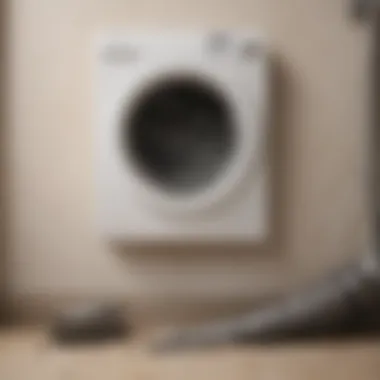
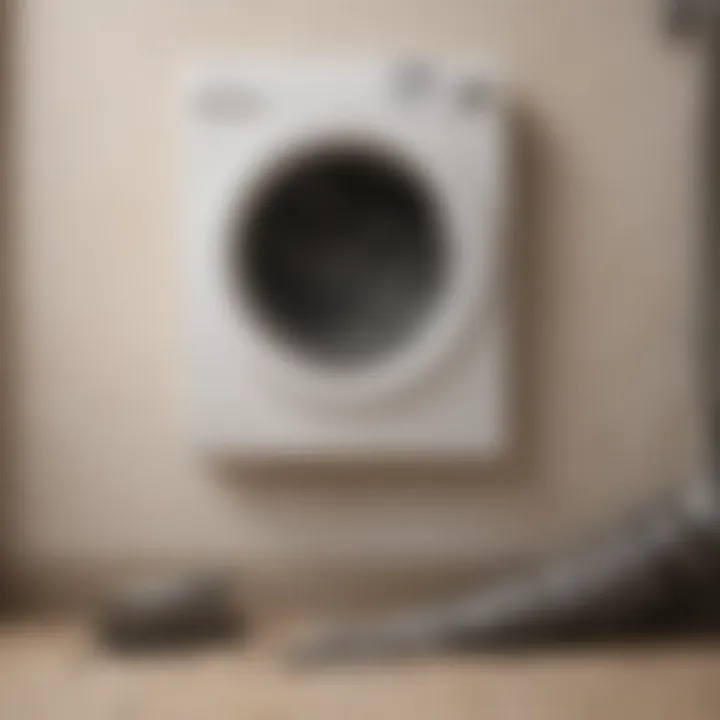
Enhanced Fire Safety
One of the most critical reasons to keep dryer vents clean is to minimize the risk of fire hazards. Lint accumulation in your dryer vent creates a highly flammable environment. According to the United States Fire Administration, failure to clean the dryer vent is one of the leading causes of dryer fires. Maintaining clean vents helps in reducing this risk significantly.
Moreover, a professional cleaning can identify other underlying issues which may contribute to potential fire sources, such as damaged ducts or improper venting. This proactive approach in vent maintenance promotes a safer household and reduces the likelihood of fire emergencies.
Improved Appliance Efficiency
A clean dryer vent system directly correlates with the efficient operation of your appliances. When vents are congested with lint and debris, your dryer works harder to push hot air through the clogged ducts. This causes the appliance to consume more energy and results in longer drying cycles.
By regularly cleaning the vents, homeowners can reduce the load on their dryers, which not only enhances the appliance longevity but also ensures that clothes dry faster. An efficiently running dryer helps to minimize wear and tear, ultimately prolonging the lifespan of your appliance and ensuring optimal performance.
Reduction of Energy Costs
Regular maintenance of dryer vents can lead to substantial savings on energy bills. When dryer vents are clean and functioning properly, the appliance can operate more efficiently. This decreases electricity consumption as the dryer no longer needs to exert extra effort in pushing hot air through obstructed ducts.
In essence, maintaining a clean ventilation system is a financially wise decision. It allows homeowners to enjoy the same level of performance in their appliances while significantly lowering energy costs. Over time, these savings can accumulate, contributing positively to overall household finances.
In summary, the benefits of regular dryer vent cleaning extend beyond mere appliance upkeep. It enhances safety, improves efficiency, and drives down energy costs. Ensuring that this often-overlooked aspect of home maintenance is addressed can lead to a safer and more cost-effective way of managing laundry tasks.
DIY Cleaning Techniques
In the realm of dryer vent maintenance, embracing DIY cleaning techniques is not just an option but a necessity for many homeowners. These techniques serve as practical solutions that empower users to take charge of their dryer maintenance. Regular cleaning ensures optimal air flow, reduces fire risk, and enhances dryer efficiency. Understanding how to perform these cleaning tasks can lead to significant cost savings compared to hiring professionals.
Essential Tools Required
Before diving into the actual cleaning process, it's vital to gather the necessary tools. Having the right equipment simplifies the job and maximizes effectiveness. Common tools required for DIY dryer vent cleaning include:
- Dryer vent cleaning brush: Specifically designed to remove lint from the vent system.
- Vacuum cleaner with hose attachment: Useful for sucking out lint and debris.
- Screwdriver: Needed for removing or loosening duct connections.
- Flashlight: Helps see deep into the vent for thorough inspection.
- Sturdy gloves: Protect hands from sharp edges and accumulated grime.
These tools are relatively easy to find and, once you have them, you can perform routine maintenance whenever necessary.
Step-by-Step Cleaning Process
To ensure an effective DIY cleaning, following a structured step-by-step process is beneficial. This involves several critical steps:
Preparation
Preparation is crucial for a successful cleaning task. Before you begin, make sure to disconnect the dryer from its power source to avoid accidents. Clear the area around the dryer to have enough space to work around it. Gather all necessary tools for quick access. This proactive step helps in maximizing efficiency and minimizes the potential for interruptions during the cleaning. Start by removing any lint from the lint screen, which is a common component that collects debris. A clean screen allows better air flow, paving the way for a more effective deep cleaning process.
Cleaning the Ducts
The next step involves cleaning the ducts. This is an integral part of maintaining clear airflow. Use the dryer vent cleaning brush to reach deep into the ducting. Rotate the brush gently as you push it into the ducts to dislodge any stubborn lint buildup. Make sure to clean the entire length of the duct that runs from the back of the dryer to the exit point. The ability to reach deep into the duct efficiently removes obstructions, enhancing dryer performance and reducing the risk of overheating.
Cleaning the Vent Outlet
Cleaning the vent outlet is equally important. This section is where the exhaust air exits your home, making it a common area for lint accumulation. Unscrew the vent cover to access it directly. Use your vacuum to suck out any lint that may have collected around the opening. If there is a considerable buildup, using the cleaning brush can help remove lints lodged deep within. Proper cleaning of the vent outlet ensures that air can escape freely, preventing potential issues related to airflow that could affect the efficiency of the dryer.
Ensuring that dryer vents are cleaned thoroughly not only protects the appliance but also contributes to household safety.
Keeping your dryer vents in optimal condition is best accomplished through understanding the cleaning process and diligently performing maintenance. Regular engagement in DIY cleaning techniques ultimately ensures longevity and improved performance for your appliance.
Professional Cleaning Services
Engaging professional cleaning services is an essential consideration for homeowners aiming to maintain their dryer vents efficiently and safely. Unlike regular home maintenance, dryer vent cleaning requires specific knowledge and tools. Hiring professionals not only ensures thorough cleaning but also mitigates risks associated with improper handling of the task.
Cleaning services deploy specialized equipment to reach deep within vents where lint tends to accumulate, which often goes unnoticed by standard DIY efforts. The importance of these services extends beyond mere cleaning; they contribute significantly to the longevity of appliances and help enhance indoor air quality.
When to Seek Professional Help
Identifying the right moment to seek professional help can be as important as the cleaning itself. Certain signs may signal that your dryer vent requires expert attention.
- Persistent Increase in Drying Time: If clothes take significantly longer than usual to dry, it could mean a blockage.
- Presence of Overheating: Hotter-than-usual dryer exteriors or overheating during the cycle may indicate a hazardous buildup of lint.
- Smoke or Burning Smells: Any burning odors during operation should not be ignored and demands immediate professional evaluation.
Choosing the Right Service Provider
Selecting an experienced and reliable service provider is crucial for a successful dryer vent cleaning. Here are some key considerations when choosing a service:
- Credentials and Certifications: Verify whether the provider is certified by relevant bodies, such as the National Fire Protection Association (NFPA).
- Experience and Reputation: Look for reviews online, and consider seeking recommendations. Experienced companies will usually have a track record of satisfied clients.
- Services Offered: Ensure they provide comprehensive services that include inspection, cleaning, and potential repairs.
- Transparency in Pricing: A trustworthy service should provide clear estimates without hidden fees or unexpected charges.
- Insurance and Guarantees: Check if they are insured. Also, inquire about satisfaction guarantees or follow-up services.
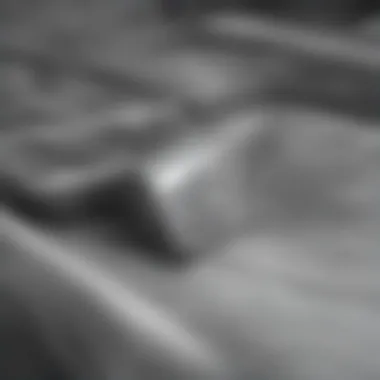

In summary, professional cleaning services play a pivotal role in maintaining the functionality and safety of dryer vents. The decision to hire professionals should not be taken lightly, especially given the potential risks associated with neglecting this important maintenance task.
Tools and Equipment for Cleaning
The importance of having the right tools and equipment when cleaning dryer vents cannot be overstated. Effective maintenance of dryer vents relies significantly on the accessibility and functionality of these cleaning tools. Without proper tools, attempting to clean vents can lead to inadequate results and may even pose safety hazards. This section will discuss specific cleaning equipment that enhances efficiency and efficacy.
Vacuum Attachments
Vacuum attachments play a critical role in the dryer vent cleaning process. These specialized tools are designed to reach narrow spaces and ensure thorough cleaning. One popular attachment is the long, flexible hose. It can navigate the bends and twists of vent systems, minimizing disruptions during the cleaning process. Attachments that come with a brush head are also useful, as they can remove stubborn lint and debris that accumulates along duct walls.
When choosing vacuum attachments, consider the compatibility with your vacuum model. A properly fitting attachment allows for suction to maintain its strength, improving cleaning performance. Most vacuum manufacturers provide a range of compatible accessories tailored for various cleaning tasks. Therefore, selecting the right vacuum attachment is essential to achieve optimal results.
Brushes and Rods
In addition to vacuum attachments, brushes and rods are essential for effectively dislodging lint buildup within dryer vents. Dryer vent brushes are typically made with durable bristles that can scrub away stuck debris. Long rods that can extend to reach deeper sections of the vent system are equally important. They allow you to push or pull lint out from the interior of the duct, significantly reducing fire risks associated with lint accumulation.
Using brushes and rods together creates a more comprehensive cleaning strategy. The brush loosens debris while the rod helps to push it out. This dual approach ensures that the entire duct system is addressed, leaving minimal residue behind. Also, consider investing in brushes with varying sizes and stiffness. This variation allows for flexibility when cleaning different vent layouts.
"Using the right tools reduces cleaning time and maximizes safety when maintaining dryer vents."
Safety Precautions During Cleaning
Cleaning dryer vents is a vital part of maintaining both safety and efficiency in your home. However, it is essential to recognize that improper cleaning methods can pose risks to yourself and your appliance. By adhering to certain safety precautions, you can significantly reduce these risks, ensuring a safer cleaning process while prolonging the life of your dryer.
Electrical Safety Tips
One of the crucial aspects of safety during dryer vent cleaning involves handling electrical components appropriately. Before starting the cleaning process, follow these essential steps:
- Unplug the Dryer: This is the most fundamental step. Disconnect your dryer from the power outlet to eliminate any risk of electrical shock during the cleaning process.
- Inspect Cords and Connections: Check the power cord for any signs of wear or damage. If defects are found, it may be prudent to replace the cord before continuing to use the appliance.
- Avoid Overloading Electrical Circuits: Ensure that the circuit you use for your dryer is not supporting too many devices. Overloaded electrical circuits can lead to overheating and fires.
Following these electrical safety tips can help you perform the cleaning task without putting your safety in jeopardy.
Avoiding Lint Fires
Lint buildup in dryer vents is not just an inconvenience; it can also be a fire hazard. Yearly, dryer fires cause significant damage and may lead to severe injuries or fatalities. To effectively avoid lint fires during the cleaning process, consider these points:
- Regular Cleaning Schedule: Set aside time every few months to clean your dryer vents, preventing excessive lint accumulation. Relying solely on visual inspections is not a safe practice, as buildup may not always be visible.
- Check the Ventilation System: Make it a habit to examine the entire ventilation system for any obstructions, not just the external openings. This includes the ducts leading to the external vent outlet.
- Use Proper Cleaning Tools: Invest in dryer vent cleaning brushes and vacuum attachments designed specifically for this purpose. These tools effectively remove lint without pushing it further into the system.
Taking these preventative measures seriously can significantly reduce the risk of dryer fires, ensuring a safer home environment.
Environmental Considerations
The maintenance of dryer vents is not solely a matter of convenience or safety; there are significant environmental factors to consider as well. Understanding these factors can help homeowners make more informed choices regarding the cleaning and upkeep of their dryer vents while also contributing positively to the environment.
Disposing of Lint Properly
Lint from dryer vents is not just a byproduct of drying clothes; it is also a potential pollutant. Proper disposal is crucial as improper disposal can lead to environmental hazards. Here are some practices to consider:
- Avoid Flushing Down the Toilet: Disposing lint in this manner can clog sewage systems and wastewater treatment facilities.
- Use Composting: Lint made from natural fibers can be composted, returning nutrients to the soil. However, synthetic fibers should not be included in compost, as they do not decompose.
- Dedicated Waste Bins: Place lint in a sealed bag and throw it in the trash, ensuring it doesn’t contribute to litter or other waste mismanagement issues.
These steps can minimize the negative impact of lint on the environment.
Sustainable Cleaning Practices
Sustainability in cleaning practices stretches beyond the act of cleaning itself. When maintaining dryer vents, consider the following:
- Use Eco-Friendly Products: Choose cleaning products that are biodegradable and safe for the environment. This reduces harmful chemical runoff that can affect ecosystems.
- Regular Maintenance: Consistent cleaning reduces the need for extensive overhauls, conserving resources and preventing excessive waste.
- Energy Efficiency: Keeping dryer vents clean enhances the efficiency of the dryer, requiring less energy for operation. This, in turn, translates to lower utility costs and a smaller carbon footprint.
By adopting sustainable cleaning practices related to dryer vent maintenance, homeowners can not only ensure efficiency and safety in their homes but also make a positive contribution to the health of the environment.
"Routine maintenance of dryer vents is an easy yet impactful step toward sustainable living."
By considering environmental factors in dryer vent maintenance, homeowners ensure their practices are aligned with broader sustainability efforts.
Finale
In this article, we have explored the critical importance of maintaining dryer vents. Regular cleaning plays a pivotal role in ensuring safety and efficiency within household settings. Neglecting this aspect can lead to significant hazards, including increased risk of fire. Furthermore, a clean dryer vent contributes to the longevity of the appliance and lowers energy consumption, benefiting not just the owner but the environment as well.
Summary of Key Points
- Regular cleaning is essential for preventing lint buildup, which can cause overheating and fire hazards.
- Household safety is compromised when dryer vents are not properly maintained, as this can lead to serious incidents.
- Improved appliance efficiency results from cleaner vents, leading to reduced energy costs.
- Recognizing signs of blockage early can prevent more extensive damage and costly repairs.
- Proven cleaning methods, both DIY and professional, exist to address maintenance effectively.
Final Thoughts on Dryer Vent Maintenance
Taking dryer vent maintenance seriously is not just about prolonging the life of the appliance. It is also about safeguarding your home and loved ones. Proactive care should be part of every homeowner’s routine. Awareness of signs indicating a need for cleaning and understanding the right frequency for maintenance is crucial.
Incorporating regular inspections and timely actions ensures that the system remains efficient. This not only enhances performance but also minimizes operational costs over time. For those who may overlook this simple task, consider the implications it could have on safety and expenses. The benefits of diligence in this area far outweigh the effort it requires. An informed approach leads to better choices and a safer living environment.







